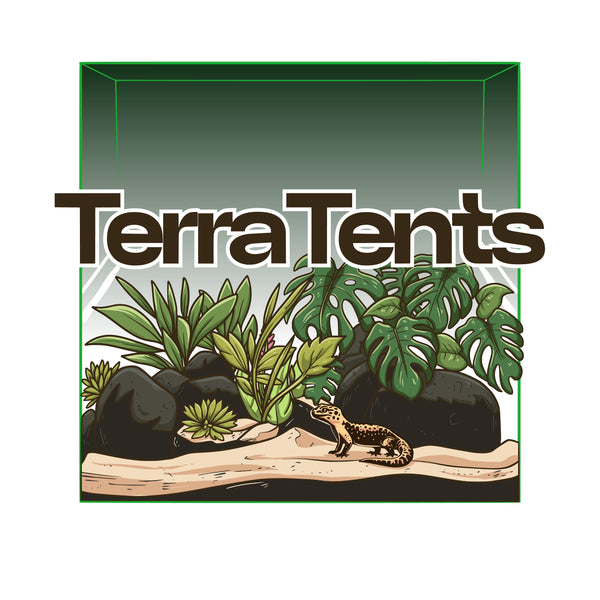*Healthier Reptiles, Happier Owners: How Climate-Controlled Enclosures Improve Health
Share
### **Healthier Reptiles, Happier Owners: How Climate-Controlled Enclosures Improve Health**
Reptiles are fascinating creatures, but caring for them comes with unique challenges. Unlike warm-blooded pets, reptiles depend entirely on their environment to regulate their body temperature and other vital functions. If their habitat isn’t properly controlled, it can lead to a host of health issues that impact not only their well-being but also the joy of owning them.
In this blog, we’ll explore how climate-controlled enclosures can drastically improve a reptile’s health, prevent common illnesses, and create a more enjoyable experience for pet owners.
---
#### **Why Climate Control Matters for Reptiles**
Reptiles are ectothermic, meaning they rely on external heat sources to maintain their body temperature. Without the right temperature and humidity, they can’t properly digest food, fight off infections, or even move comfortably. In the wild, reptiles regulate these needs naturally by seeking shade, basking in the sun, or finding humid spots. In captivity, it’s up to owners to replicate these conditions.
For example:
- A bearded dragon needs a basking spot of around 100–110°F to digest food and maintain metabolism. Without this, they may suffer from digestive issues or become lethargic.
- Chameleons and other tropical species require high humidity to prevent dehydration and maintain skin health. Improper humidity levels can lead to respiratory infections and shedding problems.
By investing in a climate-controlled enclosure, owners can ensure these conditions are consistently met.
---
#### **Common Health Problems Caused by Poor Environmental Conditions**
When a reptile’s environment isn’t properly controlled, it can lead to a range of health issues, such as:
1. **Respiratory Infections**
Low temperatures or excessive humidity can create the perfect conditions for respiratory infections. Symptoms include wheezing, mucus discharge, and lethargy.
2. **Metabolic Bone Disease (MBD)**
Improper UVB lighting and temperature gradients can lead to calcium deficiencies, causing weakened bones and deformities.
3. **Dehydration**
Low humidity levels can result in dehydration, which manifests as sunken eyes, lethargy, and shedding problems.
4. **Digestive Issues**
Without a proper temperature gradient, reptiles cannot metabolize food efficiently, leading to constipation or impaction.
5. **Stress-Related Illnesses**
Inconsistent conditions can cause chronic stress, weakening the immune system and making reptiles more susceptible to illnesses.
---
#### **How Climate-Controlled Enclosures Address These Issues**
Modern climate-controlled enclosures are designed to replicate the natural environments of various reptile species. Here’s how they help:
1. **Temperature Regulation**
Advanced enclosures come with built-in heating systems, such as heat domes or radiant panels, that allow for precise control over basking and ambient temperatures. This ensures reptiles always have access to the heat they need for digestion, metabolism, and overall health.
2. **Humidity Management**
Features like misting systems, foggers, and adjustable vents make it easy to maintain the proper humidity levels. This is particularly beneficial for tropical species that require consistent moisture to prevent dehydration and respiratory issues.
3. **UVB Lighting Integration**
Many enclosures are designed to accommodate UVB lighting, which is crucial for calcium absorption and bone health. This prevents conditions like metabolic bone disease.
4. **Automated Monitoring Systems**
Some enclosures include digital thermometers and hygrometers, as well as automated systems that adjust temperature and humidity levels as needed. These tools take the guesswork out of maintaining the ideal environment.
5. **Ventilation Control**
Proper airflow is essential to prevent mold growth and maintain oxygen levels. Adjustable vents in climate-controlled enclosures ensure adequate ventilation without causing drafts or drying out the habitat.
---
#### **Benefits for Owners**
Climate-controlled enclosures don’t just benefit the reptiles—they make life easier for owners, too. Here’s how:
- **Reduced Health Costs:** By preventing illnesses, you’ll save on expensive vet visits and treatments.
- **Peace of Mind:** Knowing your reptile’s environment is consistent and healthy reduces stress and worry.
- **Convenience:** Automated systems mean less time spent manually adjusting heat lamps, misting, or monitoring conditions.
- **Better Bonding:** A healthy, active reptile is more enjoyable to observe and interact with, enhancing the owner’s experience.
---
#### **Tips for Maintaining a Climate-Controlled Enclosure**
To get the most out of a climate-controlled enclosure, follow these tips:
1. **Invest in Quality Equipment:** Choose enclosures with reliable heating, lighting, and humidity control systems. Look for models with digital controls for precision.
2. **Monitor Conditions Regularly:** Use thermometers and hygrometers to check temperature and humidity levels daily.
3. **Clean and Maintain the Enclosure:** Regular maintenance prevents mold, bacteria, and other hazards that can compromise your reptile’s health.
4. **Tailor Conditions to the Species:** Research your reptile’s natural habitat and adjust the enclosure settings accordingly.
---
#### **Conclusion**
A climate-controlled enclosure is more than just a convenience—it’s a necessity for the health and well-being of your reptile. By providing a stable environment that mimics their natural habitat, these enclosures prevent common illnesses, reduce stress, and support long-term health. As a result, both reptiles and their owners enjoy a happier, more fulfilling relationship.
Whether you’re caring for a desert-dwelling lizard or a humidity-loving chameleon, a climate-controlled enclosure ensures your pet thrives in captivity. Invest in the right setup today, and watch your reptile flourish in a safe, comfortable, and healthy environment.
---
Let me know if you'd like the final blog on *Easy to Monitor, Easy to Maintain* next!
